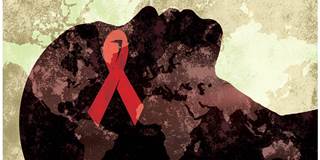Until recently, the South African government’s response to an epidemic affecting more than 10% of the population was lackluster and foolish. But rising pressure over the past two decades – from civil-society groups, the media, and more enlightened politicians – is finally showing results.
ERFURT – In the battle against HIV/AIDS, South Africa was for many years the perfect example of what not to do. Until recently, the government’s response to the epidemic, which threatened the country’s very lifeblood, was lackluster and foolish. But rising pressure over the past two decades – from civil-society groups, the media, and more enlightened politicians – is finally showing results. A disease that has inflicted profound social and economic pain, and dramatically reduced life expectancy, appears to be in retreat.
But a new UN report suggests that South Africa’s battle against the virus is far from over. The country has the world’s most severe HIV problem, with some 5.6 million citizens – more than 10% of the population – currently living with the virus. Every year, around 300,000 new infections, and 270,000 AIDS-related deaths, are recorded. HIV/AIDS patients are also prone to other infections: an estimated 70% of South Africans with AIDS also contract tuberculosis, while half of those carrying the HIV virus are expected to do so during their lifetime. Worse, a third of pregnant women – a highly AIDS-prone demographic – have been diagnosed with the virus, which can be passed on to their babies during childbirth.
The ferociousness of the disease, and the speed at which it spread, took many South Africans by surprise. As in developed countries, HIV infections initially were concentrated among hemophiliacs, sexually active gay men, and intravenous drug users. But, during the 1990’s, and for reasons that are still not fully understood, the virus exploded into the general population. The number of infected South Africans (equivalent to the population of Denmark) outstrips that of neighboring Mozambique, Lesotho, Botswana, Namibia, Swaziland, and Zimbabwe combined.

ERFURT – In the battle against HIV/AIDS, South Africa was for many years the perfect example of what not to do. Until recently, the government’s response to the epidemic, which threatened the country’s very lifeblood, was lackluster and foolish. But rising pressure over the past two decades – from civil-society groups, the media, and more enlightened politicians – is finally showing results. A disease that has inflicted profound social and economic pain, and dramatically reduced life expectancy, appears to be in retreat.
But a new UN report suggests that South Africa’s battle against the virus is far from over. The country has the world’s most severe HIV problem, with some 5.6 million citizens – more than 10% of the population – currently living with the virus. Every year, around 300,000 new infections, and 270,000 AIDS-related deaths, are recorded. HIV/AIDS patients are also prone to other infections: an estimated 70% of South Africans with AIDS also contract tuberculosis, while half of those carrying the HIV virus are expected to do so during their lifetime. Worse, a third of pregnant women – a highly AIDS-prone demographic – have been diagnosed with the virus, which can be passed on to their babies during childbirth.
The ferociousness of the disease, and the speed at which it spread, took many South Africans by surprise. As in developed countries, HIV infections initially were concentrated among hemophiliacs, sexually active gay men, and intravenous drug users. But, during the 1990’s, and for reasons that are still not fully understood, the virus exploded into the general population. The number of infected South Africans (equivalent to the population of Denmark) outstrips that of neighboring Mozambique, Lesotho, Botswana, Namibia, Swaziland, and Zimbabwe combined.